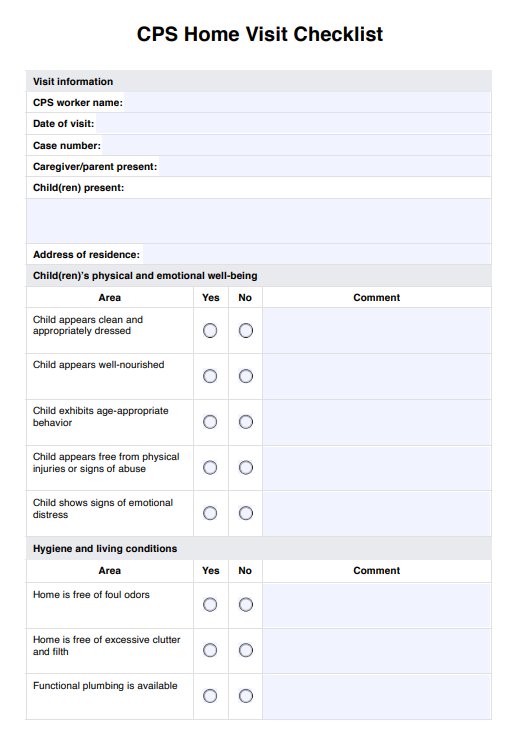A CPS Home Visit Checklist is created by identifying critical assessment areas when evaluating child welfare. Simply categorize all elements with checkboxes and comment sections beside each to allow for precise documentation.

CPS Home Visit Checklist
Our free CPS Home Visit Checklist promotes healthy child well-being and enhances safety. Read the complete guide now and download the template.
CPS Home Visit Checklist Template
Commonly asked questions
CPS Home Visit Checklists are used in abuse or neglect cases, court mandates, callouts, monitoring, and follow-up appointments. Essentially, any situation where child welfare at home must be examined.
The CPS Home Visit Checklist is commonly used by systematically assessing each section as the agent walks around the child’s home. Each component is checked to see whether it is sufficient, and comments are added. This provides evidence for potential risk management, recommendations, or immediate actions.
EHR and practice management software
Get started for free
*No credit card required
Free
$0/usd
Unlimited clients
Telehealth
1GB of storage
Client portal text
Automated billing and online payments











